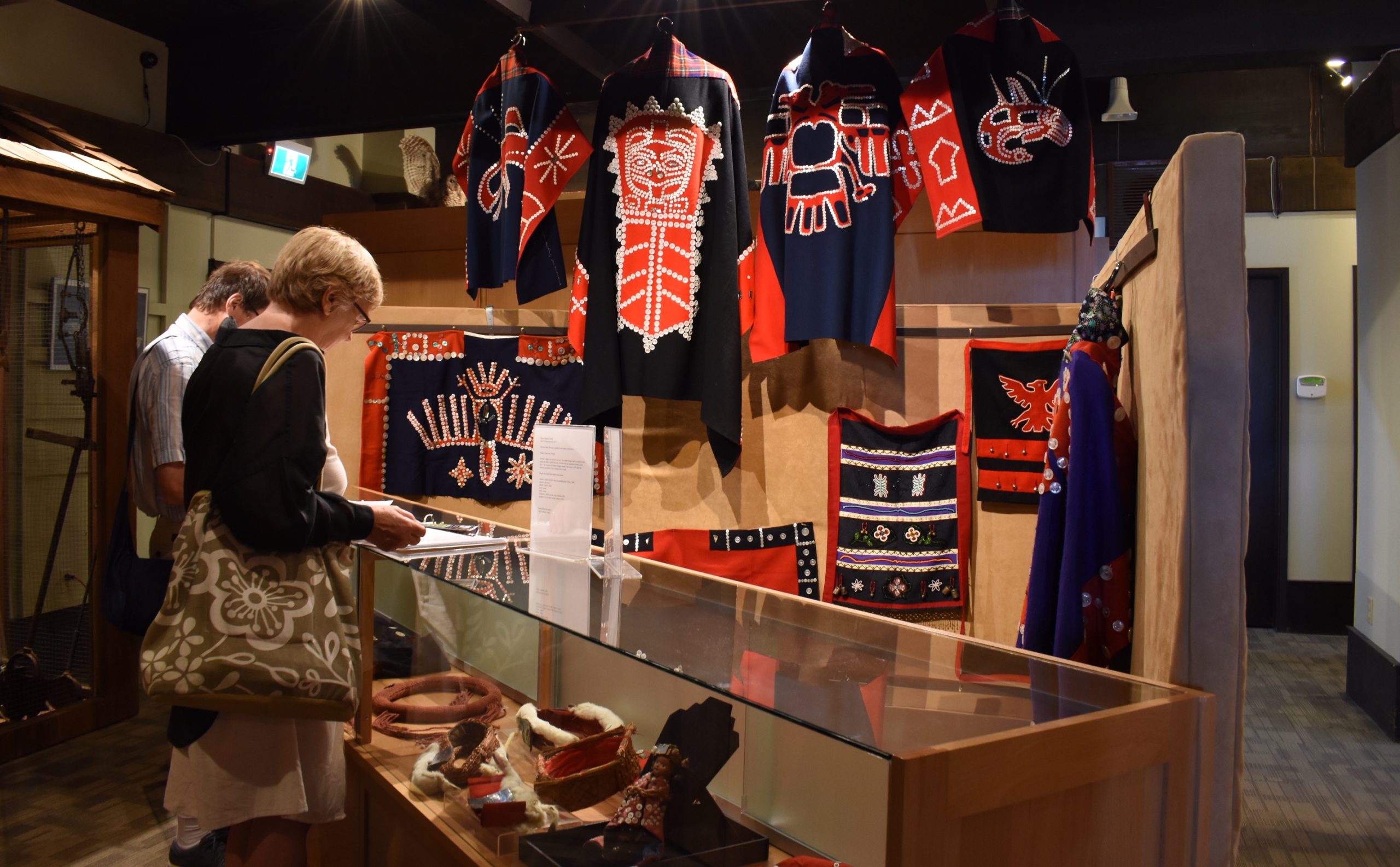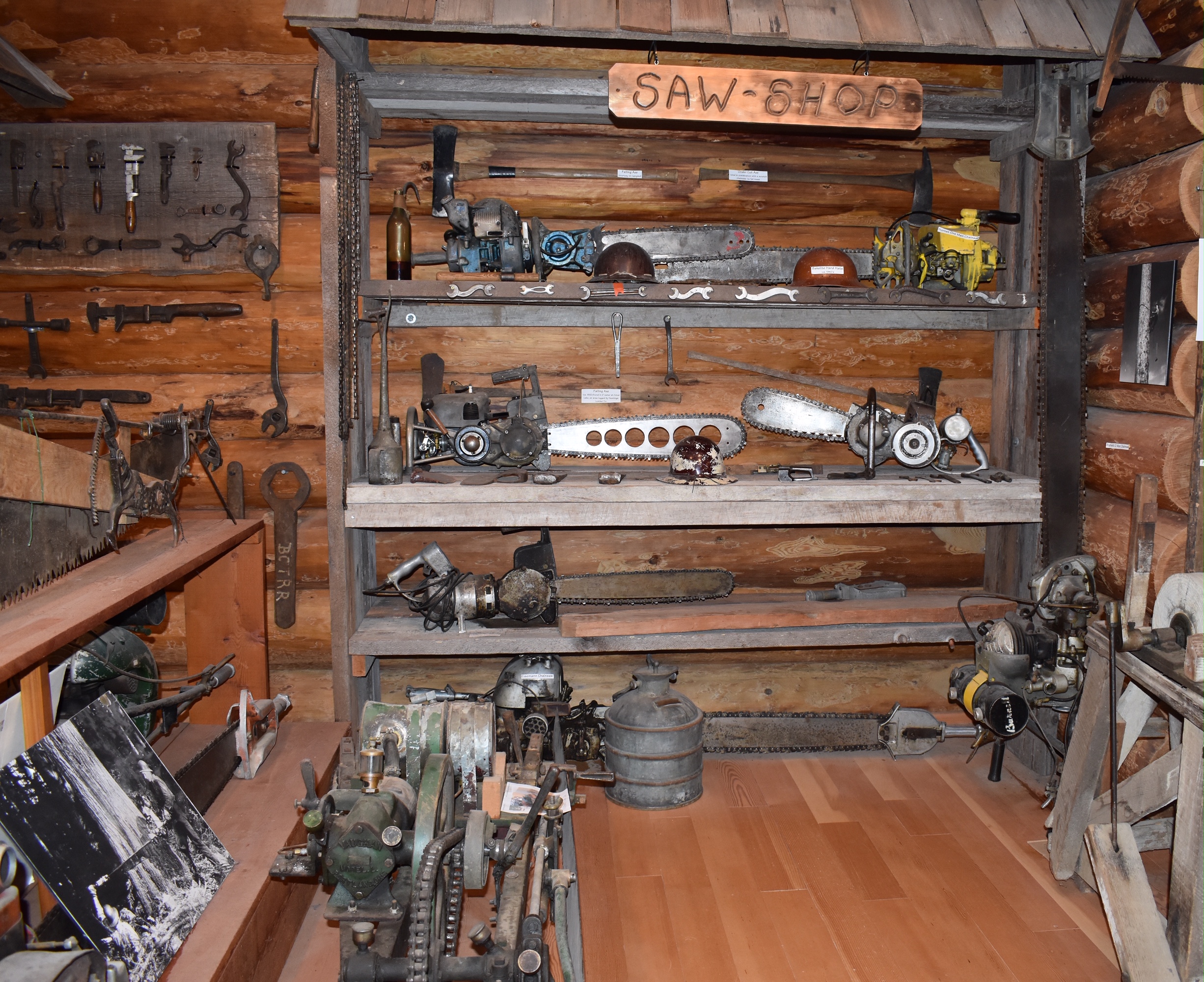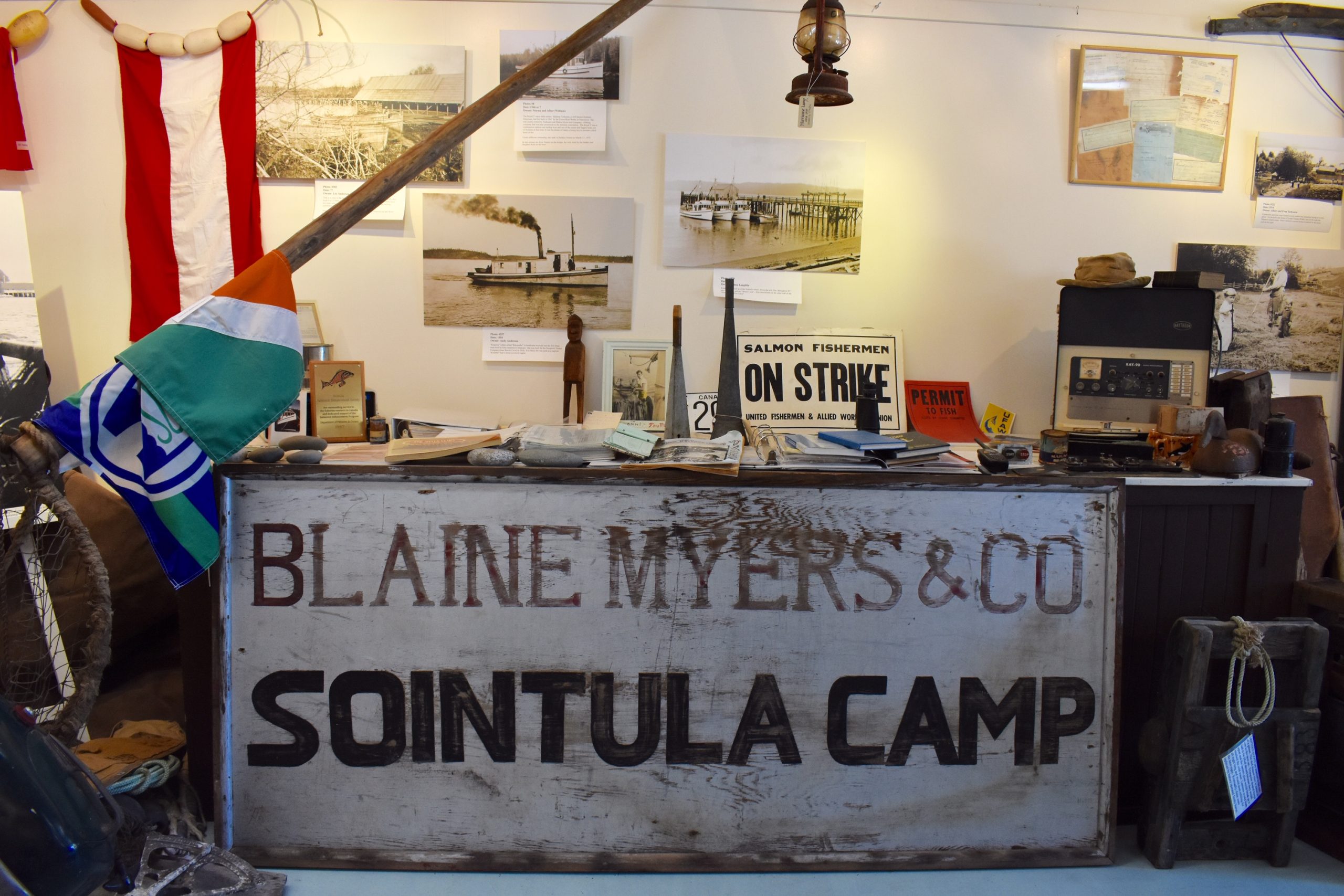Bringing rich stories to life through artifacts, art and engaging multi-sensory exhibits visitors and residents are all invited to learn more about Vancouver Island North’s history and the history of people here thousands of years before us.

U’mista Cultural Centre in Alert Bay showcases a remarkable collection of historical and contemporary artifacts of the Kwakwaka’wakw people. U’mista means “the return of something important” and the centre opened in 1980 to house returned potlatch artifacts. The potlatch ceremony was banned in Canada between 1885 and 1951. Sacred regalia taken by government authorities after a potlatch in 1921 hosted by Chief Dan Cranmer ended up in museums and private collections around the world. Most of the pieces have come back to be preserved and shared at the centre.

A special temporary exhibit “Story Box” Franz Boas, George Hunt and the Making of Anthropology is on view until October 26th. This exhibit explores the hidden histories of Boas and Hunt’s landmark 1897 book, The Social Organization and the Secret Societies of the Kwakiutl Indians. With designs by Corrine Hunt, it features rare ceremonial objects, archival photographs, original manuscripts, and drawings being shown in British Columbia for the first time in over a century. For more information visit the exhibit website here.
To learn more about Kwakwaka’wakw potlatches and take a virtual tour of the gallery visit here.
As one of the longest operating First Nations cultural facilities in BC U’mista is open year round and includes: a modern museum, art gallery, gift shop, group tours and cultural programs.
Billy’s Museum – Echo Bay
For those traveling the Broughton Archipelago by boat, a trip to the tiny community of Echo Bay is not complete without a visit to Billy’s Museum. A self-described natural collector Bill Proctor has spent his entire 80+ year life in the area and has worked as a fisherman, logger and beachcomber.
In 1999 Proctor built a shack from a single tree, splitting and milling each piece of wood to singlehandedly build his museum. Categorized and neatly displayed relics and artifacts include: an impressive collection of bottles and Japanese glass fishing floats, First Nations tools, ceramic beads and trinkets. Other buildings include a forge and gift shop selling local artists’ work. Museum hours in the summer months are 10am-4pm but the best rule of thumb is if Bill is there the museum is open.
Port Hardy Museum – Operating since 1982 the Port Hardy Museum showcases the history of local industries which is also the name of an annual festival FILOMI which stands for forestry, logging and mining. From 1970 to 1996 Island Copper Mine became the largest open copper mine in the world. The museum has so many items dealing with mining they are rotated in order to display them all.

The museum is home to an exciting collection of prehistoric stone tools indicating the earliest known habitation by First Nations more than 8000 years ago. Also on display until the end of the month is a temporary exhibit of beautiful and meaningful button blankets from Namgis, Kwakiutl and Gwa’ala-‘Nakwaxda’xw First Nations.
Reference materials can be accessed including: historical documents, oral histories, memoirs, videos, newspapers and old menus. The gift shop carries locally produced First Nations art, jewelry, carvings and textiles as well as a good selection of books.
Just a short walk from the waterfront sits a gabled log building also known as the “logging museum.” All the logging artifacts were donated by a third generation logger Glen Duncan who once ran a museum of his own in Sayward. Built with the generous donations of logging companies, local businesses, private individuals and the whole community the museum is a shining example of Vancouver Island North volunteerism. This small but big hearted museum brings to life the story of logging from the early days to modern forestry management.

Proudly sharing its resource based beginnings and coastal life the museum has household items our ancestors used generations ago as well as an impressive collection of drag saws and the very first chainsaws from the late 1940’s and early 1950’s. Originally meant to be a temporary exhibit The History of Women in the Forestry Industry created by log scaler Jenny Durke is extremely popular with visitors.
Malcolm Island was settled in 1901 by Finnish immigrants in search of a place where they could create a utopian community based on the principles of equality and freedom. Sointula which is Finnish for place of harmony was the location selected for a permanent community. Those hard working pioneers became loggers and fishermen but they also found time for theatre and music.

The Sointula Museum began as a humble collection of memorabilia and artifacts donated by local families. Items were originally stored in an attic and when the Malcolm Island Superior School closed in 1972 one of the rooms became the museum. In 2001 the museum expanded to its present day size. Housing an eclectic collection the museum shares the feeling of living in Sointula from its beginning to now.
Visitors are encouraged to look, touch and experience the many displays such as: logging and fishing equipment, theatre props and musical instruments and items from the 100+ years of Sointula’s Co-Operative Store. Firsthand written accounts and photos also give visitors a glimpse into coastal life.
Each museum tells a unique story. An incredible microcosm of history, culture and achievements. Visit. Learn. Experience. There is so much to do here on Vancouver Island North.
Karen Stewart – Freelance Writer
Karen is the author of This is Port McNeill and At Water’s Edge Ventures